Around the Cape: A Guide's Getaway - Cape St. James BC
June-July 1999
This is an article from WaveLength Magazine, available in print in North America and globally on the web
by Bill Chalmers
 |
Exposed to three major bodies of water, Cape St. James is both feared and revered. Experienced paddlers need only apply! |
It is the second week of August and I need to go paddling. Alone.
I'm a sea kayak tour guide in Gwaii Haanas National Park Reserve, a remote area of BC's west coast, and I have two weeks free between trips. I've been guiding for eight years now and this summer, for the first time ever, I'm feeling a bit grumpy about it. Feeling like I need a vacation from the work that is, for the clients I guide, the vacation itself.
We are based at Rose Harbour (summer pop. 8) on Kunghit Island, at the south end of Haida Gwaii, the Queen Charlotte Islands, 80 miles off the coast of British Columbia. My partner for the summer, Peter, and I have been talking off and on about my curmudgeonliness. About its effect on myself, on our clients, and on him, for he has borne the brunt of it several times this summer. So we both welcome the two week break apart, each with the opportunity to play on our own.
After I spend a few days prepping the final trip and visiting with friends, I return to Rose Harbour to spend an evening on the front lawn of Susan Cohen' s, where she is hosting a dinner for a group from the Ocean Light, a charter sail boat operated by Tom Ellison and his wife. Susan's garden, and the meals she creates, are legendary, and this one is no exception: elegant salads, fresh halibut, and a baked loaf stuffed with spinach and chard. I hang back and eat with Susan's sons, Heron and Ruben, and Goetz, one of her three neighbours, content not to be involved in the socializing.
The next morning I am back on the water, my kayak packed with gear and more than enough food. I set out under sunny skies and a light southwest wind in Houston Stewart Channel. West of me lies Skun Gwaii, or Anthony Island, site of the world famous Ninstints Village and its much-photographed mortuary poles. As I pass the Gordon Islands and Bowles Point, places where I usually have a group in tow, I begin to fully appreciate my solitude. I can paddle at my own pace now, listen to my walkman if I like. I am solo, alone with the wildness of the open coast. It feels self indulgent, and it is.
The name Kunghit means "to the south," which is precisely where I am headed on a circumnavigation, I hope, of Kunghit Island. While not a long paddle -the island is only fifteen miles long from Rose Harbour to Cape St. James - it is exposed: on the west to the entire Pacific, on the south to Queen Charlotte Sound, and on the east to Hecate Strait, all formidable bodies of water.
A moderate sea and light westerly wind make for a comfortable paddle down the coast to Gilbert Bay. Sooty shearwaters strafe the waves around me, gliding along the wave troughs in stealthy manoeuvres. At the entrance to the bay I raise several rafts of birds: a mix of rhinoceros auklets, pigeon guillemots, common murres, and a single red-necked grebe. I pull up on the beach by noon the empty beach-recline against a log and stare at the world, not at all at a loss as to what to do with myself without a group to feed and tend. I am enjoying this, I have to admit: a sunny, warm day on a deserted west coast beach, no tides or currents to catch, no cooking to do until I feel like eating; no questions to answer except the ones I choose to ask. I shuck my shorts and wander the length of the beach in sandals, T-shirt and hat, following the tracks of otter, deer and various birds, poking among the logs for interesting debris. Actually, I'm looking for the elusive Japanese glass fishing float, which has become increasingly rare in recent years.
 |
Cape St. James, where great forces collide.
|
While staring out to sea I see the blows of a whale working the shallows of the bay. A finback, I believe, and probably the same animal I've seen around here in recent weeks. A little later I see two orcas where the whale was. Lots of tail lobs, and a breach. Did they interact with the larger whale, I wonder? Chase him off the food source? I paddle out for a closer look and come upon a Japanese Sunfish lying at the surface. Its the second one I've seen this summer. Blame it on El Nino. (Along with the never-seen-that-before free floating pelagic barnacles that littered the beaches of the islands in July. And the voracious mackerel, still here from the previous El Nino.) The sunfish lies a foot or two below the surface, a bright silver flat-sided fish, with a surface area of nearly a square metre. Just lies there below the surface as if dead or dying. Exhausted, maybe, from the long swim. I poke it with the end of my paddle and the flank of muscle contracts forcefully, propelling it forward several feet, where again it hangs motionless in the water. Tired, perhaps, but a long way from done. The orcas move off before I can approach, so I drift for a bit, soaking in the sun, bobbing in the swell, alone but surrounded by life and energy. The very air here seems charged with something that intensifies the green of the trees, the black rocks, and the blue of sea and sky. More than just good clean air: some kind of rarefied atmosphere, clearer and crisper even than Fujichrome.
An offshore fog bank rolls in late in the afternoon, snagging itself on Barber Point, south end of the bay, and is still there in the morning, overcasting and greying my world. The swell is running from the west/ northwest and the seas between my beach and Barber Point are steep with rebounding waves meeting incoming swell, making for a bit of hard work in my first half hour of paddling, and bringing home the nature of my solitude: I am completely alone now, with no backup except my own skills, judgement, and determination.
As I clear Barber Point the seas mellow and, though the fog keeps me constantly comparing the bits of shore I see to my chart, I gain a tailwind and paddling becomes much easier. More common murres, flotillas of rhinoceros auklets, and a few tufted puffins cruise past for a look, comical looking birds with their oversized orange and yellow bills.
It's another hour and a half to the Cape, and in the last 45 minutes the wind builds steadily, giving me a strong push, with even a few swells big enough to surf me to the south. By the time I reach the channel between Kunghit and St. James Islands a three knot current is running against the wind-driven waves and swell, making for a short stretch of very active water. In the lee of Kunghit I pull into a kelp bed and watch the wind and fog bank roar past the west side of the island and slam into St. James Island like a monstrous dirty freight train, out of control, while on the east side the sky is an impeccable blue into which scudding white shreds of fog dissipate cleanly. This is Cape St. James, the Cape, a place where great forces collide. I nibble trail mix and watch like a kid at the movie.
 |
The bliss of solitude at Gilbert Bay |
Paddling east around the corner and into the Hecate Strait side of Kunghit, I head into Woodruff Bay and a classic high pressure blow: north wind at 20 to 25 knots, the strait a sea of whitecaps, and clear, solid blue sky, with a huge, white quilt of fog overlaying the west ridge of the island. The Japanese translation for white-capped seas means, literally, jumping white rabbits. A lyrical and descriptive phrase, certainly, and there are, I see, some rather big-ass rabbits heaving their fluffy white bodies down the mountainous waves in the Strait.
No worries, though, as I'm going to park my butt on the sweeping sand beach in front of me for the next two days, do nothing but read, walk, and watch the natural world carry on around me. Let it blow, I say. Let it blow itself out before I have to head back to Rose Harbour. My arrival at Woodruff Bay is well timed. And the beach is, as I'd hoped, empty of humans.
My afternoon consists of a bath, a gratuitous cup of coffee, a nap, some reading and writing, a walk up arid down the beach. I could be in Baja right now: it's hot and sunny, thirty degrees Celsius, and I'm hanging out in my Thermalounger in the shade.
A peregrine falcon glides in to harass the contingent of gulls at the creek mouth. The gulls rise and head offshore at the falcon's approach and the falcon coasts into the beach to assert his dominance. The gulls land on the rocks several hundred metres away to stare and complain while the falcon strides the sandy bank of the creek, his shoulders hunched and bulked like some steroidal midget dictator. He finds a bull kelp in the sand and proceeds to try to fly with the free end, but remains anchored to the sand. Then, out of frustration - I'm anthropomorphizing, I know - he buzzes the gulls, forcing them to wheel and dive and hit the water. A second pass and the falcon flies towards the treetops, catches the offshore wind and climbs effortlessly to a hundred metres in no time at all, where he soars for a while before I lose him.
After dinner I take my cup of tea and walk out to the point to watch the sunset over Hecate Strait and stare past St. James Island towards Vancouver Island, some 150 miles south. Beyond St. James Island, the Kerouard Islands rise out of the ocean like knobs on the spine of some mythic creature lurching up from the ocean floor to form the islands of Haida Gwaii. One more day before I have to head north, whatever the conditions. The wind has let up some but is still out there. No change in the weather yet.
The wind continues all night, and in the morning the fog bank is thundering over the trees like some massive avalanche, hissing as it tears through the tree tops and branches. The wind drives great white plumes of fog out over the beach where, as soon as they rip clear of the giant spruce trees, they hit the heated updraught coming off the sand and evaporate almost immediately. Greater drama than daytime TV, by far.
Eagles call from the tops of the spruces. And there are voices here, in the forest. Voices of the ancients, chanting words from a different time, old mutterings that reassure with their presence. The wind buffets the walls of my tent through a second night.
Up at six and on the water at 7:15. Wind still northerly in Hecate Strait. I have a flood tide to ride north on, but won't know how much it will help me until I exit the bay and round Ballard Point. Fifteen minutes later I nose into a gap inside the big rock at Ballard Point and see looming seas bearing down out of the strait. I let the boat drift back into the kelp bed and take a nervous pee in my plastic ketchup bottle. The headlands will be the hardest paddling, I know, and it should ease up a bit after I'm around the corner. My biggest concern is getting through the kelp beds without snagging my bow or paddle. If I make a mistake here, I screw up big time. It's serious, now.
I rinse my pee bottle and tell myself I can turn back if it gets too hairball, and it is then that I realize to just what extent a solo trip is an internal journey, almost completely a mental exercise. I know how far my hard skills can take me, I know I'm fit enough for it, and I know from experience my judgement is sound. But that seems to account only for about ten percent of what's required at this point. What remains is for me to make the decision to go or stay, and commit to it - the remaining ninety percent - which is all in my head.
I go, waiting for a small set before punching my way through the gap and into the lumbering seas. It is chaotic but paddleable. The current is running from the south, the waves are running out of the north-east, and the wind is funnelling out of Howe Bay from the north-west, making for high energy seas, as they say. I skirt the edge of the kelp and claw my way along the shoreline into Howe Bay for half a mile before making the crossing to a small bay just south of Annis Point. A brief rest, drink and snack in the lee and then once more into the maw. The seas at Annis Point are bigger, and much more confused, having longer fetch both in Luxana Bay and off Annis Point, which lies exposed to the whole of Hecate Strait. Exploding haystacks. Clapotis, it's called: waves refracting back through oncoming waves and meeting irregularly and chaotically. Waves appear and disappear, lifting and dropping my kayak and crashing onto me without warning, making for wet and tricky paddling.
The seas become more orderly as I make my way into Luxana Bay, and even though I'm paddling big breaking beam seas I realize the only thing that will tip me over now is my own lack of attention. Paddling in these conditions is, basically, hard, wet work. Just keep pushing. Keep the boat moving. About two miles into Luxana I turn and begin the two mile crossing into Treat Bay, a shallow bay on the north side. I am soaked to the skin, but warm from the exercise, and the sun is bright and hot. After two and a half hours and 8 miles I land on Treat Bay, and it is a treat indeed, light wind, sunshine, an empty beach to myself - I could get used to this. I strip off my wet clothes and lay them on beach logs to dry, devour my lunch, then take a nap, shifting every so often to keep the right combination of sun and shade on me.
Three hours later I eat again, put on my salt-crusted, sun-dried clothes and set out again. Lyman Point has the biggest seas of the day, but more orderly than those at Annis Point, now that the tide is no longer running against the swell. Twice, as I round the point, my boat is airborne coming down the backsides of waves. After that it's two and a half hours more of the same: big beam seas that soak me and push me around a little, but threaten nothing more. I arrive exhausted and content at High Island, one of my favourite places to camp in Haida Gwaii, and in the final warmth of the afternoon sun I open my last can of beer, nod a toast to the day, to the world, and drink deeply. Sleep comes easily this night.
A leisurely morning. Three cups of coffee and no guilt! I look back on the past five days and realize that we all need to do this from time to time, and in different ways. Yesterday I paddled the most extreme conditions I've ever paddled. Extended my limits. Discovered my boundaries weren't necessarily where I'd thought they were; that they are malleable given the right attitude and the desire. And I know this trip is in some way analogous to what many
clients go through on our commercial tours: for some it's the first time camping, the first time sleeping on the ground, the first time kayaking, or the first time paddling in swells on the exposed west coast. I raise my cup of coffee to them, then: to the expressions of awe and excitement I see in their fares at the end of the day or the end of the week: to the growth and discoveries they make, both internal and external. And as they leave our trips with their batteries recharged and a renewed perspective on their lives and worlds that comes from time in the wild places, so I, too, am ready to return to them and be a part of their wilderness experience.
It's an easy hour's paddle back to Rose Harbour and the good folks there. Susan asks, Did you go around? Yeah, I did, I say, unable to suppress a smile. How was it? she asks. We were wondering about you. It was good, I say. A bit lumpy here and there, but good.
Bill Chalmers is a seasonal, migrant worker (read: sea kayak guide), who returns to Vancouver Island to write and paddle. He has recently made the life-changing move of acquiring a fixed address. His first novel, No More Worthy, was published in September '96, by Oolichan Books.©

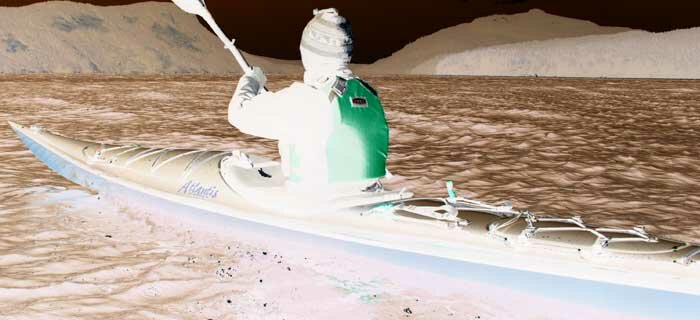
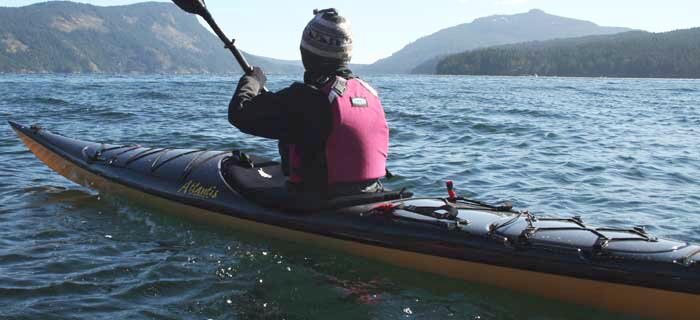
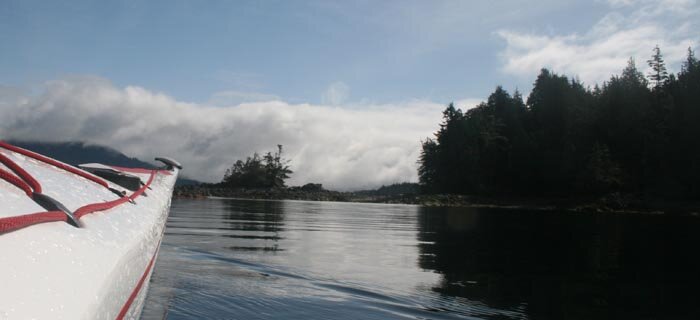
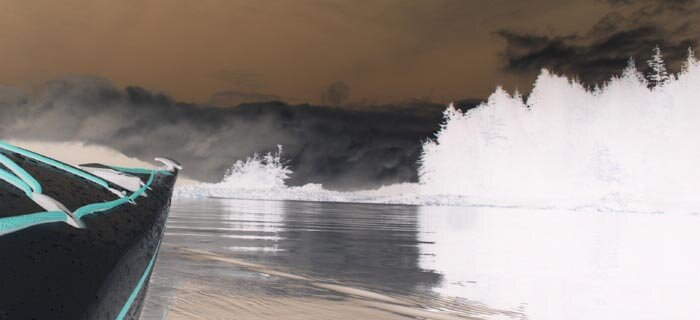
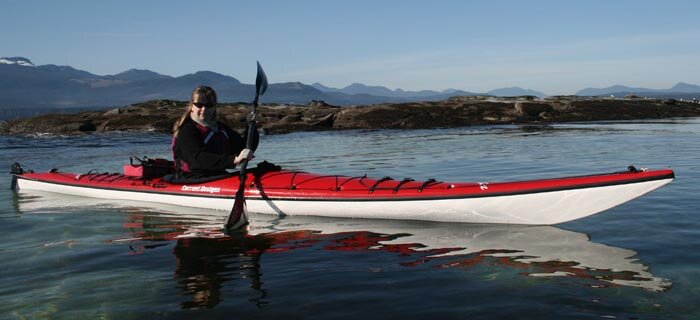

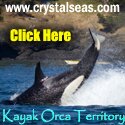
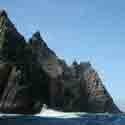

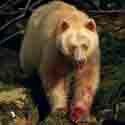











 This site uses valid HTML, CSS and Flash. All content Copyright © 2010 Wild Coast Publishing.
This site uses valid HTML, CSS and Flash. All content Copyright © 2010 Wild Coast Publishing.